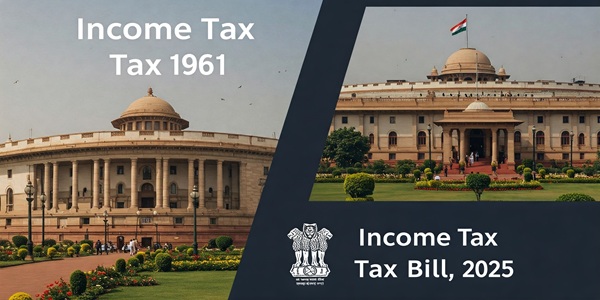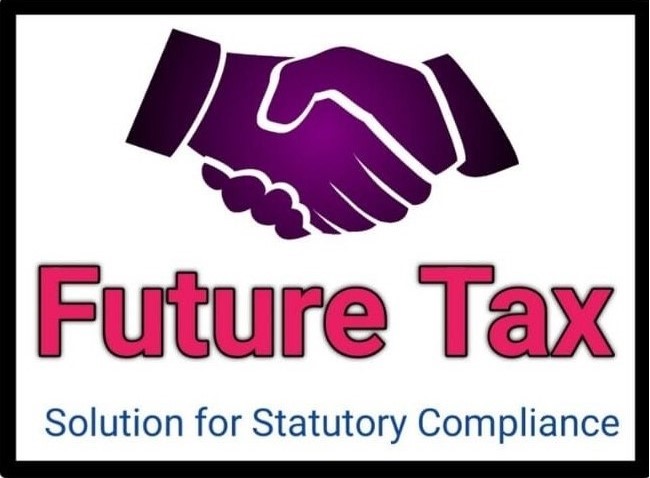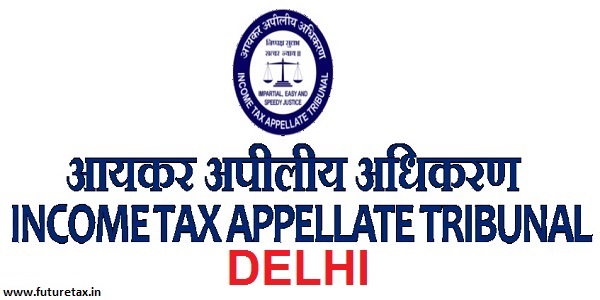
Key Changes in Tax Provisions in Tamil
- Tamil Tax upate News
- February 14, 2025
- No Comment
- 117
- 34 minutes read
The Income Tax Bill, 2025, modernizes and clarifies various tax provisions while largely retaining the structure of the Income Tax Act, 1961. Salary-related changes include an increased standard deduction and exemption for digital work tools. Capital gains provisions now specify holding period adjustments for digital assets and modern valuation methods. Income from house property remains mostly unchanged, with clearer language and a relief period for stock-in-trade properties. Business income taxation aligns with digital transactions, with specific startup incentives and updated rules for speculative trades. The “Income from Other Sources” head explicitly includes virtual digital assets and online gaming, with increased deductions for family pensions. Assessment procedures now feature a codified faceless assessment framework, stricter reassessment timelines, and broader taxpayer access to the Dispute Resolution Panel. These updates simplify tax compliance and incorporate modern economic practices while maintaining the fundamental structure of the previous law. Link to Buy: Income Tax Bill 2025 at 30% Discount with Free shipping
Provisions Related to Salary
| Provision | Income Tax Act, 1961 (Section & Description) | Income Tax Bill, 2025 (Clause & Description) | Key Changes |
| Chargeability | Section 15: Income is chargeable under the head “Salaries” when due or received, including arrears of salary. | Clause 15: Similar provision, covering income due or received, including arrears of salary, for the tax year. | No major structural changes: language simplified for clarity. |
| Scope of Salary | Section 17: Includes wages, annuities, pensions, gratuities, commissions, perquisites, and profits in lieu of salary. | Clause 16: Covers wages, annuities, pensions, gratuities, commissions, perquisites, and profits in lieu of salary. | Maintained scope but adds clarity for digital compensation forms. |
| Perquisites | Section 17(2): Defines perquisites and taxable benefits provided by the employer, such as accommodation and motor vehicles. | Clause 17: Similar definition but explicitly excludes certain allowances for digital tools or assets used exclusively for work purposes. | Modernized to exclude work-related digital assets from taxable perquisites. |
| Deductions from Salary | Section 16: Includes standard deduction, tax on employment, and entertainment allowance (specific cases). | Clause 19: Standard deduction increased to ₹75,000 or salary, whichever is less, for certain categories; similar allowances retained. | Standard deduction increased and new conditions added for eligibility. |
| Profits in Lieu of Salary | Section 17(3): Includes payments due to termination of employment, such as gratuities and Keyman insurance policy payments. | Clause 18: Retains similar inclusions but provides additional clarity on lump-sum compensation scenarios. | Expanded examples and clearer language for specific cases of termination benefits. |
| Relief on Arrears of Salary | Section 89: Relief provided for tax liability arising due to receipt of arrears of salary. | Clause 157: Relief provisions extended to multiple-year salaries and lump-sum payments from family pensions. | Broader applicability for relief on specific types of income, including arrears. |

Key Highlights of Salary Provisions
1. Simplification: The provisions under the Income Tax Bill, 2025, have clearer language and cater to modern work scenarios, such as allowances for digital work tools.
2. Standard Deduction: Increased standard deduction provides relief to taxpayers under specific conditions.
3. Enhanced Relief Provisions: Relief on arrears and lump-sum payments broadened for better applicability.
Provisions Related to Capital Gains
| Provision | Income Tax Act, 1961 (Section & Description) | Income Tax Bill, 2025 (Clause & Description) | Key Changes |
| Chargeability | Section 45: Capital gains are taxable when a transfer of a capital asset occurs during the previous year. | Clause 67: Similar provision, specifying that capital gains arise on the transfer of a capital asset. | No significant change; maintains scope and intent. |
| Short-term and Long-term Capital Gains | Section 2(42A): Defines short-term and long-term capital assets based on the holding period; gains computed accordingly. | Clause 72: Retains the definition but aligns holding period thresholds with contemporary practices and asset classes. | Holding period adjustments for certain asset classes, such as digital assets. |
| Computation of Capital Gains | Sections 48-50: Provides for computation of gains by deducting indexed acquisition costs, improvement costs, and transfer expenses from consideration. | Clause 73: Retains the same methodology with additional clarity on computation for modern asset types. | Language modernization and coverage for newer asset categories like digital. |
| Exemptions on Reinvestment | Sections 54 to 54F: Exemptions for reinvestment in residential properties, bonds, and certain specified assets. | Clauses 86-88: Retains similar exemptions but consolidates scenarios for reinvestment benefits in specified asset classes. | Consolidated and clearer provisions for reinvestment exemptions. |
| Cost of Acquisition | Section 55: Defines cost of acquisition and indexed cost for determining cost of acquisition in specific situations, such as inherited or gifted assets. | Clause 73: Retains provisions but introduces clarity for assets. | Enhanced clarity for special situations and valuation mechanisms. |
| Capital Gains on Compulsory Acquisition | Section 54D: Provides relief for gains from compulsory acquisition of certain assets if reinvested in specific projects. | Clause 84: Retains similar provisions with updated project definitions for reinvestment. | Modernization of reinvestment options for compulsory acquisitions. |
| Slump Sale | Section 50B: Provides for taxation of gains arising from the slump sale of an undertaking as a going concern. | Clause 77: Similar provision, with enhanced definitions and clearer computation methods. | Enhanced clarity and scope for complex business sales. |
| Fair Market Value for Consideration | Section 50C: If consideration is less than the stamp duty value, the latter is deemed as full value for consideration. | Clause 78: Retains similar provisions with flexibility for valuation in specific cases. | Better alignment with valuation realities in specific scenarios. |
| Valuation Reference | Section 55A: Allows reference to a valuation officer for ascertaining fair market value. | Clause 91: Retains the provision but enhances its scope to include modern valuation techniques for new asset categories. | Modern valuation techniques explicitly included. |
| Special Provisions for Equity & Units | Section 112A: Taxation of long-term gains on equity shares and mutual fund units. | Clause 198: Retains similar provisions for equity and fund units; includes concessional rates and thresholds for applicability. | Improved clarity on concessional rates and eligibility thresholds. |
Key Highlights of Capital Gains Provisions
1. Simplification and Modernization: The 2025 Bill simplifies provisions while accommodating contemporary asset categories like digital assets and start-up equity.
2. Clarity in Exemptions: Enhanced clarity in reinvestment scenarios, such as for residential properties and specified bonds.
3. Valuation Methods: Modern valuation approaches for specific cases ensure better tax compliance and reduced disputes.
Income from House Property Provisions
| Provision | Income Tax Act, 1961 (Section & Description) | Income Tax Bill, 2025 (Clause & Description) | Key Changes |
| Chargeability | Section 22: Annual value of property chargeable under “Income from House Property.” | Clause 20: Similar provision, charging income from buildings or lands appurtenant thereto. | No significant change; maintains scope and structure. |
| Exemptions for Business Use | Section 22: Property used for owner’s business or profession excluded if profits are taxable under “Profits and Gains of Business or Profession.” | Clause 20(2): Property portions occupied for business or profession, with profits taxable under other heads, are excluded from this computation. | Clearer phrasing but similar concept. |
| Determination of Annual Value | Section 23: Annual value deemed as higher of fair rental value or actual rent received; deductions for property taxes paid. | Clause 21: Annual value determined as higher of reasonable expected rent or actual rent received; deductions for local authority taxes. | Explicitly allows for exclusions such as unrealizable rent. |
| Vacancy Allowance | Section 23(1)(c): Annual value adjusted based on rent received or receivable if property is vacant for part of the year. | Clause 21(2): Similar provision for adjusting annual value when properties are vacant for part of the tax year. | No significant change in approach. |
| Deductions from Income | Section 24: Deduction for municipal taxes, standard deduction (30% of annual value), and interest on borrowed capital up to ₹2,00,000 for self-occupied properties. | Clause 22: Similar deductions for municipal taxes, 30% of annual value as standard deduction, and interest on borrowed capital with conditions. | Aligns broadly with existing provisions; retains ₹2,00,000 limit for interest deduction. |
| Self-Occupied Property | Section 23(2): Annual value considered nil for two self-occupied houses; interest deduction restricted to ₹2,00,000. | Clause 21(6): Annual value deemed nil for two self-occupied houses; interest deduction restrictions similar but defined clearly. | Maintains similar scope but simplifies applicability rules. |
| Arrears and Unrealized Rent | Section 25AA: Arrears of rent or unrealized rent recovered taxed as income; 30% deduction allowed. | Clause 23: Similar provisions, taxing arrears and unrealized rent recovered; deduction allowed. | Aligns with current law but with improved language for clarity. |
| Property Held as Stock-in-Trade | Not specifically addressed; treated under general provisions of business income. | Clause 21(5): Properties held as stock-in-trade deemed to have nil annual value for two years from the end of the financial year of completion. | Introduces a specific relief period for properties held as stock-in-trade. |
| Properties Owned by Co-Owners | Section 26: Income from co-owned property divided in proportion to ownership share, assessed separately for each owner. | Clause 24: Similar provision, assessing income for co-owners based on ownership share. | No significant change; retains current approach. |
Key Highlights of Income from House Property
1. Simplification: Clearer language and codification of existing practices minimize ambiguity.
2. Introduction of Specific Reliefs: Clause 21(5) introduces a relief period for properties held as stock-in-trade.
3. Retained Structure: Most provisions mirror the structure and intent of the 1961 Act, ensuring continuity for taxpayers.
Income from Business and Profession Provisions
| Provision | Income Tax Act, 1961 (Section & Description) | Income Tax Bill, 2025 (Clause & Description) | Key Changes |
| Chargeability | Section 22: Specifies income chargeable under “Profits and Gains of Business or Profession.” | Clause 25: Similar provisions defining income chargeable under “Profits and Gains of Business or Profession.” | No structural changes, but language is simplified. |
| Deductions Allowed | Sections 30 to 37: Lists allowable deductions, including rent, depreciation, insurance, and repairs. | Clauses 28 to 37: Retains similar deductions but with added clarity, particularly for digital payments and business-related tools. | Modernization of conditions for expenses, including digitalization. |
| Depreciation | Section 32: Provides for depreciation deductions on tangible and intangible assets based on specified rates. | Clause 33: Similar provision; retains existing depreciation structure but simplifies certain classifications and methodologies. | No major changes; focuses on ease of interpretation. |
| Disallowances | Sections 40 & 40A: Lists non-allowable expenses, such as payments to non-residents without tax deduction and excessive payments to related parties. | Clauses 35 and 36: Similar provisions but include detailed rules for related-party transactions and non-compliance with digital payment systems. | Expanded scope for disallowances related to modern business practices. |
| Income from Speculative Transactions | Section 43(5): Defines speculative transactions and their treatment for taxation purposes. | Clause 39: Retains the definition and treatment of speculative transactions but provides more comprehensive rules for digital trades. | Updated rules for speculative digital asset trading. |
| Amortization of Preliminary Expenses | Section 35D: Allows amortization of certain preliminary expenses incurred before the commencement of business. | Clause 44: Retains the concept but simplifies the computation process and conditions for deduction. | Simplified computation methodology. |
| Scientific Research Expenses | Section 35: Allows deductions for capital and revenue expenditure on scientific research related to the business. | Clause 45: Similar provision but explicitly includes research in technology and digital advancements. | Broader scope for scientific research expenses. |
| Presumptive Taxation | Sections 44AD, 44AE: Presumptive taxation for small businesses and professionals based on turnover or specific criteria. | Clause 58: Retains presumptive taxation but includes updated turnover limits and streamlined criteria for small businesses and professionals. | Adjusted turnover limits and simplified criteria. |
| Special Provisions for Startups | No explicit section for startups; benefits included through various general provisions. | Clause 140: Introduces explicit provisions for eligible startups, including 100% tax exemption for three consecutive years within the first 10 years. | Dedicated provisions for startups with high employment potential. |
Key Highlights of Income from Business and Profession
1. Modernization: Aligns deductions and disallowances with the current economic landscape, including digital payments and assets.
2. Startup Incentives: Specific provisions for startups, providing clarity and encouragement for new ventures.
3. Simplification: Concise language with clearer rules for deductions, disallowances, and special provisions.
Income from Other Sources Provisions
| Provision | Income Tax Act, 1961 (Section & Description) | Income Tax Bill, 2025 (Clause & Description) | Key Changes |
| Chargeability | Section 56: Income not chargeable under any other head is taxable under “Income from Other Sources.” | Clause 92: Income of every kind not chargeable under any other head is taxable under “Income from Other Sources.” | No significant change; maintains scope and intent. |
| Specific Incomes Included | Section 56(2): Includes dividends, lottery winnings, and rent from sub-letting. | Clause 92(2): Includes dividends, winnings from lotteries, card games, gambling, and interest on securities. | Expanded clarity for digital earnings and certain compensations. |
| Deductions Allowed | Section 57: Deductions include commission for realization of income, repairs, and maintenance expenses. | Clause 93: Retains similar deductions; adds explicit provisions for expenses like banking commissions for certain digital incomes. | Alignment with modern payment systems and clarity for deductions. |
| Amounts Not Deductible | Section 58: Specifies non-deductible expenses, including personal expenses and payments outside India without tax compliance. | Clause 94: Retains similar restrictions; includes stricter compliance measures for international payments and digital transactions. | Enhanced enforcement for compliance with international and digital payment systems. |
| Family Pension | Section 57(iia): Deduction of 1/3rd of pension or ₹15,000, whichever is less. | Clause 93(d): Deduction of 1/3rd of pension or ₹25,000, whichever is less, for specified cases. | Increased deduction limits for family pensions, providing relief to dependents. |
| Winnings from Lotteries | Section 115BB: Taxed at a flat rate of 30% with no deductions allowed. | Clause 194: Retains flat 30% tax rate but provides clarity for winnings from online games and virtual contests. | Inclusion of online games and digital platforms for taxation. |
| Forfeited Advance Money | Section 56(2)(ix): Forfeited advances received during failed property transfers are taxable as income. | Clause 92(2)(h): Similar provision; taxable under “Income from Other Sources.” | No change in treatment, but clearer categorization under “Income from Other Sources.” |
| Interest on Enhanced Compensation | Section 56(2)(viii): Taxable as income; deduction allowed for 50% of such interest under Section 57(iv). | Clause 92(2)(l): Retains similar provisions; deduction for 50% of interest on enhanced compensation is allowed. | Maintains current treatment for enhanced compensation interest. |
| Income from Sub-Letting | Section 57(ii): Allows deduction for rent paid on sub-let property. | Clause 93(a): Retains similar deductions for rent paid on sub-let properties. | No significant change; maintains the existing approach. |
| Virtual Digital Assets | Not explicitly covered. | Clause 92(2)(j): Income from virtual digital assets included explicitly as taxable under “Income from Other Sources.” | New provision addressing taxation of digital asset transactions like cryptocurrencies. |
Key Highlights of Income from Other Sources
1. Modernization: The 2025 Bill incorporates digital earnings, virtual digital assets, and online gaming winnings explicitly.
2. Enhanced Deductions: Deduction limits for family pensions increased, reflecting inflation adjustments.
3. Compliance Focus: Stronger provisions for deductions and taxation related to international and digital payments.
Assessment Proceedings Provisions
| Provision | Income Tax Act, 1961 (Section & Description) | Income Tax Bill, 2025 (Clause & Description) | Key Changes |
| Inquiry Before Assessment | Section 142: Enables the Assessing Officer (AO) to make inquiries and call for information before finalizing assessments. | Clause 268: Retains similar provisions; includes power to call for detailed statements of assets and liabilities, and reference to special audits. | Expanded scope for asset and liability inquiries; codifies audit-related procedures. |
| Assessment Procedure | Section 143: Regular assessment includes scrutiny assessment, wherein details are verified based on filed returns. | Clause 270: Provides for processing returns, making prima facie adjustments, and selection for scrutiny assessments. | Streamlined process with detailed provisions for prima facie adjustments. |
| Best Judgment Assessment | Section 144: Permits AO to complete assessment based on best judgment if the taxpayer fails to comply. | Clause 271: Similar provisions, with added emphasis on procedural safeguards and opportunities for taxpayer response. | Additional safeguards for taxpayers to ensure procedural fairness. |
| Faceless Assessment | Not explicitly included; introduced under subsequent amendments to the 1961 Act. | Clause 273: Comprehensive framework for faceless assessments, including automated case allocation via a National Faceless Assessment Centre. | Fully codified faceless assessment structure, covering all stages of communication and compliance. |
| Reassessment (Escaped Income) | Sections 147-149: Allows reassessment if income chargeable to tax has escaped assessment, subject to specific conditions. | Clauses 279-285: Similar provisions, with stricter timelines and sanctions for issuing notices and reassessment. | Introduced stricter timelines and codified procedures for notices. |
| Time Limit for Assessments | Section 153: Specifies timelines for completion of regular assessments, reassessments, and rectifications. | Clause 286: Retains timelines but adjusts for faceless assessments and procedural changes. | Updated timelines to accommodate faceless assessment frameworks. |
| Dispute Resolution Panel (DRP) | Section 144C: Introduced for foreign companies and transfer pricing disputes. | Clause 275: Expands DRP applicability beyond foreign companies, allowing domestic taxpayers access to this mechanism. | Broadened scope for DRP applicability to improve taxpayer grievance redressal. |
| Block Assessments | Sections 153A-153C: Specific procedures for search and seizure cases, with block periods for income assessment. | Clauses 292-296: Retains similar provisions with enhanced clarity on computation and timelines for block assessments. | Clarified timelines and scope for block assessments in search cases. |
| Valuation and Technical Input | Section 142A: AO may refer to a Valuation Officer for estimating fair market value of property. | Clause 269: Retains valuation provisions but incorporates digital and forensic tools for enhanced accuracy in assessments. | Modernization of valuation methods with emphasis on technology. |
Key Highlights of Assessment Proceedings
1. Faceless Assessment: The Bill fully integrates faceless assessment procedures, centralizing operations via a National Faceless Assessment Centre.
2. Improved Procedural Safeguards: Enhancements in safeguards for taxpayers, ensuring fairness during assessments.
3. Modernization: Emphasis on digital tools, streamlined processes, and codification of newer mechanisms such as DRPs.
Appellate Proceedings Provisions
| Provision | Income Tax Act, 1961 (Section & Description) | Income Tax Bill, 2025 (Clause & Description) | Key Changes |
| First Appeal: Commissioner (Appeals) | Section 246A: Appeals against specified orders to the Commissioner (Appeals). | Clause 357: Appeals to Commissioner (Appeals) for specific orders, with a structured procedure and time limits. | Similar scope but with improved timelines and procedural clarity. |
| First Appeal: Joint Commissioner (Appeals) | Not explicitly provided in the 1961 Act. | Clause 356: Allows appeals to Joint Commissioner (Appeals) for cases handled by Assessing Officers below Joint Commissioner rank. | Introduces a new appellate level for lower-ranking officer cases. |
| Appeals to Appellate Tribunal | Sections 252-255: Appeals to ITAT on orders of Commissioner (Appeals); includes procedures and powers of the Tribunal. | Clauses 362-364: Similar provisions for appeals to the ITAT, with a focus on procedural efficiency and timelines. | Retains core provisions but with streamlined language. |
| Appeals to High Court | Sections 260A-260B: Appeals on substantial questions of law; provisions for procedure and jurisdiction. | Clause 365: Retains appeals to High Court on substantial questions of law; enhanced clarity in defining jurisdiction and applicability. | Simplified procedural guidelines and jurisdictional clarity. |
| Appeals to Supreme Court | Section 261: Appeals to Supreme Court on matters of law decided by the High Court. | Clause 367: Similar provisions; allows appeals on specified substantial legal questions. | Procedural modernization; aligns with current legal practices. |
| Dispute Resolution Committee (DRC) | Not explicitly provided; Dispute Resolution Panel (DRP) available under Section 144C for eligible taxpayers. | Clause 379: Introduces the Dispute Resolution Committee (DRC) for small and medium taxpayers to resolve disputes amicably. | Expands the dispute resolution mechanism to include smaller taxpayers. |
| Time Limits for Appeals | Section 249: Specifies timelines for filing appeals to Commissioner (Appeals) and Tribunal; varies based on the nature of the order. | Clause 358: Retains similar timelines but ensures consistent adherence and updated filing mechanisms (e.g., digital filing). | Consistent timelines and emphasis on digital filing processes. |
| Advance Rulings and Appellate Review | Sections 245N-245V: Provisions for advance rulings for specified categories of taxpayers. | Clauses 381-389: Retains advance ruling provisions but introduces Board for Advance Rulings (BAR) for consistency and appeals to High Court. | Streamlined structure for advance rulings with an appellate mechanism for clarity. |
| Special Provisions for Repetitive Appeals | Not explicitly addressed in the 1961 Act. | Clause 375: Allows reference to pending questions of law before the High Court or Supreme Court to avoid repetitive appeals. | Introduces a provision to reduce repetitive litigation. |
Key Highlights of Appellate Proceedings
1. New Mechanisms: Introduction of Joint Commissioner (Appeals) and Dispute Resolution Committee (DRC) broadens accessibility for taxpayers.
2. Procedural Modernization: Emphasis on timelines, digital processes, and reducing repetitive litigation ensures efficiency.
3. Streamlined Advance Rulings: Centralized Board for Advance Rulings (BAR) provides clarity and an avenue for High Court appeals.




